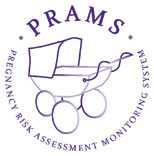Tobacco Use and Pregnancy: CDC Activities

What Is CDC Doing To Eliminate Tobacco Use and Exposure During the Reproductive Years?
CDC strives to help women around the world to be tobacco-free before, during, and after pregnancy to improve reproductive and overall health outcomes through
- Evaluating and promoting evidence-based interventions for prevention and cessation of tobacco use among women.
- Analyzing and disseminating population-based surveillance and survey data.
- Conducting and synthesizing epidemiologic studies on health effects of combustible and smokeless tobacco on reproductive and infant health.
- Serving as subject matter experts and providing technical assistance to public health organizations.
- Promoting collaboration with internal and external partners.
The CDC’s Division of Reproductive Health (DRH), Office on Smoking and Health (OSH), National Center for Birth Defects and Developmental Disabilities, and National Center for Environmental Health collaborate on projects to address this public health problem.
The following are some of CDC’s highlights:
Pregnancy Risk Assessment and Monitoring System
The Pregnancy Risk Assessment Monitoring System (PRAMS) is a surveillance project of the CDC and state health departments. PRAMS collects state-specific,

population-based data on maternal attitudes and experiences before, during, and shortly after pregnancy. Currently, PRAMS is conducted in 40 states and New York City and covers 78% of all US live births. The PRAMS questionnaire collects information on smoking before, during, and after pregnancy, as part of the core questionnaire that is used by all states. States may also add optional questions to their surveys, and these questions cover tobacco-related topics such as use of smokeless tobacco, receipt of prenatal care provider advice about quitting smoking, use of interventions to quit smoking, and smoking rules used in the home. For more topic information see the PRAMS questionnaire.
Prenatal Smoking Cessation in Argentina and Uruguay
CDC funded a 4-year project to evaluate the adaptation and implementation of a brief smoking cessation counseling intervention (5A’s) with nurse midwives and system reminders (e.g., chart stickers, vital sign stamps, medical record flow sheets, checklists) in prenatal clinics in Buenos Aires, Argentina, and Montevideo, Uruguay. Prenatal smoking rates in these countries are among the highest in the world, 15% and 20%, respectively; however, pregnancy-specific smoking cessation interventions are not systematically integrated into prenatal clinics. The project objectives are to increase the frequency of women receiving the 5 A’s, decrease the frequency of women who smoke at the end of pregnancy, and increase the frequency of positive attitudes and readiness to provide smoking cessation counseling. Research is being led by Tulane University in collaboration with the Institute for Clinical Effectiveness and Health Policy and Montevideo Clinical and Epidemiological Research Unit.
WHO Guidelines for the Management of Tobacco, Alcohol, and Illicit Drug Dependence
World Health Organization (WHO) in collaboration with CDC and other agencies developed clinical guidelines for treating tobacco, alcohol, and illicit drug dependence during pregnancy. There are currently no up-to-date, evidence-based guidelines for identifying and managing tobacco use and exposure to secondhand smoke (SHS) in pregnancy in most of low- and middle- income countries. Furthermore, many existing guidelines do not include all forms of tobacco use or measures to limit maternal SHS exposure. To fill this gap, the WHO has developed the WHO Recommendations for the Prevention and Management of Tobacco use and Second-hand Smoke Exposure in Pregnancy. The guidelines were developed by an independent Guidelines Development Group and cover the following issues:
- Elements necessary for effective screening of pregnant women for tobacco use (smoked and smokeless) and SHS exposure.
- Safety and effectiveness of psychosocial and pharmacological interventions for tobacco use in pregnancy.
- Effective interventions for reducing SHS exposure at work and in public places and at home.
National Tobacco Control Program
CDC’s Office on Smoking and Health (OSH) created the National Tobacco Control Program (NCTP)
- Page last reviewed: September 29, 2017
- Page last updated: September 29, 2017
- Content source:


 ShareCompartir
ShareCompartir